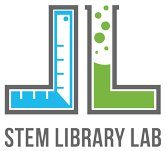by Callie Oliver | Jan 7, 2019
(HS.PS2B.c) Attraction and repulsion between electric charges at the atomic scale explain the structure, properties, and transformations of matter, as well as the contact forces between material objects.
by Callie Oliver | Jan 7, 2019
(HS.PS1A.b) The periodic table orders elements horizontally by the number of protons in the atom’s nucleus and places those with similar chemical properties in columns. The repeating patterns of this table reflect patterns of outer electron states.
by Callie Oliver | Jan 7, 2019
(HS.PS1A.a) Each atom has a charged substructure consisting of a nucleus, which is made of protons and neutrons, surrounded by electrons.
by Callie Oliver | Jan 4, 2019
(MS.LS4C.a) Adaptation by natural selection acting over generations is one important process by which populations change over time in response to changes in environmental conditions. Traits that support successful survival and reproduction in the new environment tend...
by Callie Oliver | Jan 4, 2019
(MS.LS4A.c) Comparison of the embryological development of different species also reveals similarities that show relationships not evident in the fully-formed anatomy.

